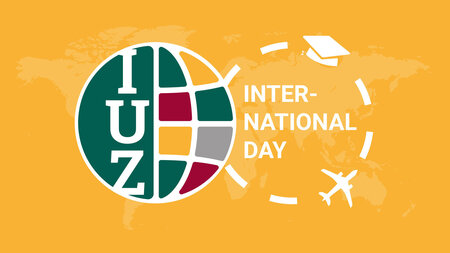A Very Special New Research Building for Chemnitz University of Technology
Foundation stone laid for new Electron Microscopy Center, which will provide access to the latest technologies and methods of materials research, in the university's Erfenschlager Straße 73 campus
-
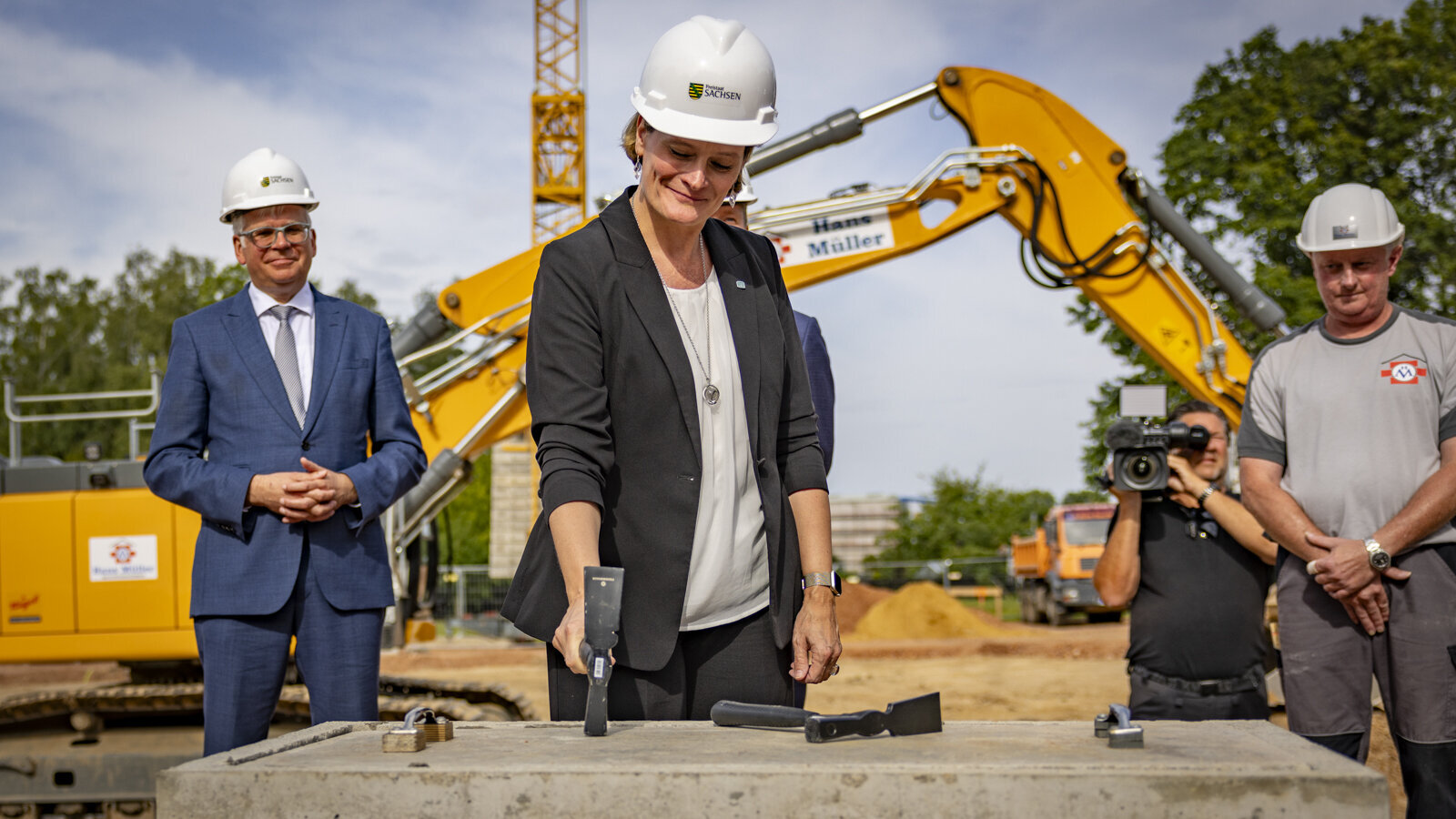
The Vice President for Research and University Development at Chemnitz University of Technology, Prof. Dr. Anja Strobel, conveyed her good wishes for the construction with three hammer blows. Photo: Jacob Müller -
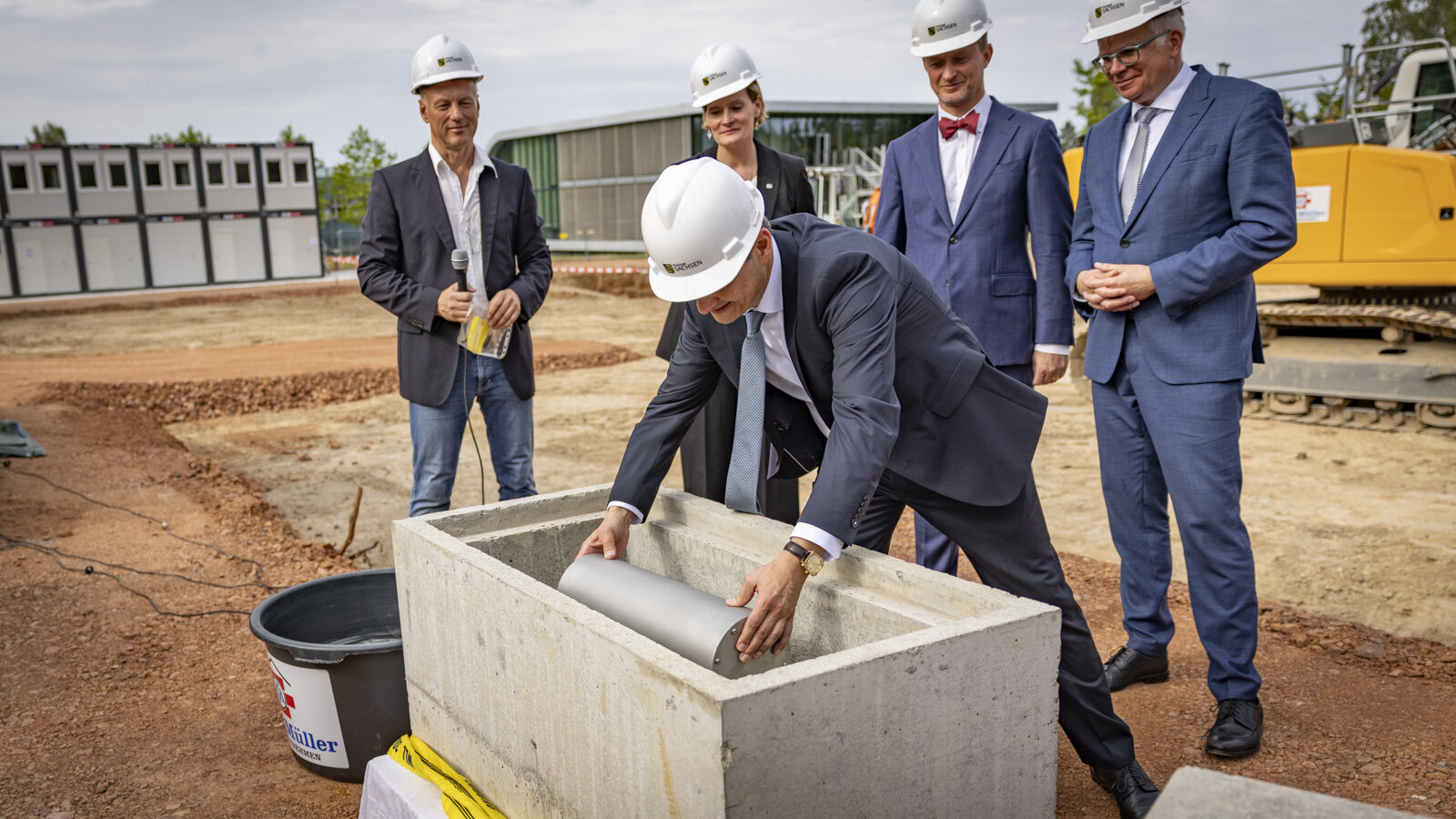
The insertion of the cassette with the contemporary documents by Falk Reinhardt, Chemnitz Branch Manager of the State Enterprise for Real Estate and Construction Management (SIB), and the setting of the foundation stone slab were the highlight of the ceremonial laying of the foundation stone. SIB Project Manager Mirko Richtsteiger (from left), the Vice President for Research and University Development at Chemnitz University of Technology, Prof. Dr. Anja Strobel, the State Secretary at the Saxon Ministry for Science, Culture and Tourism, Andreas Handschuh, and Saxony's Minister of Finance Hartmut Vorjohann watched the event. Photo: Jacob Müller -
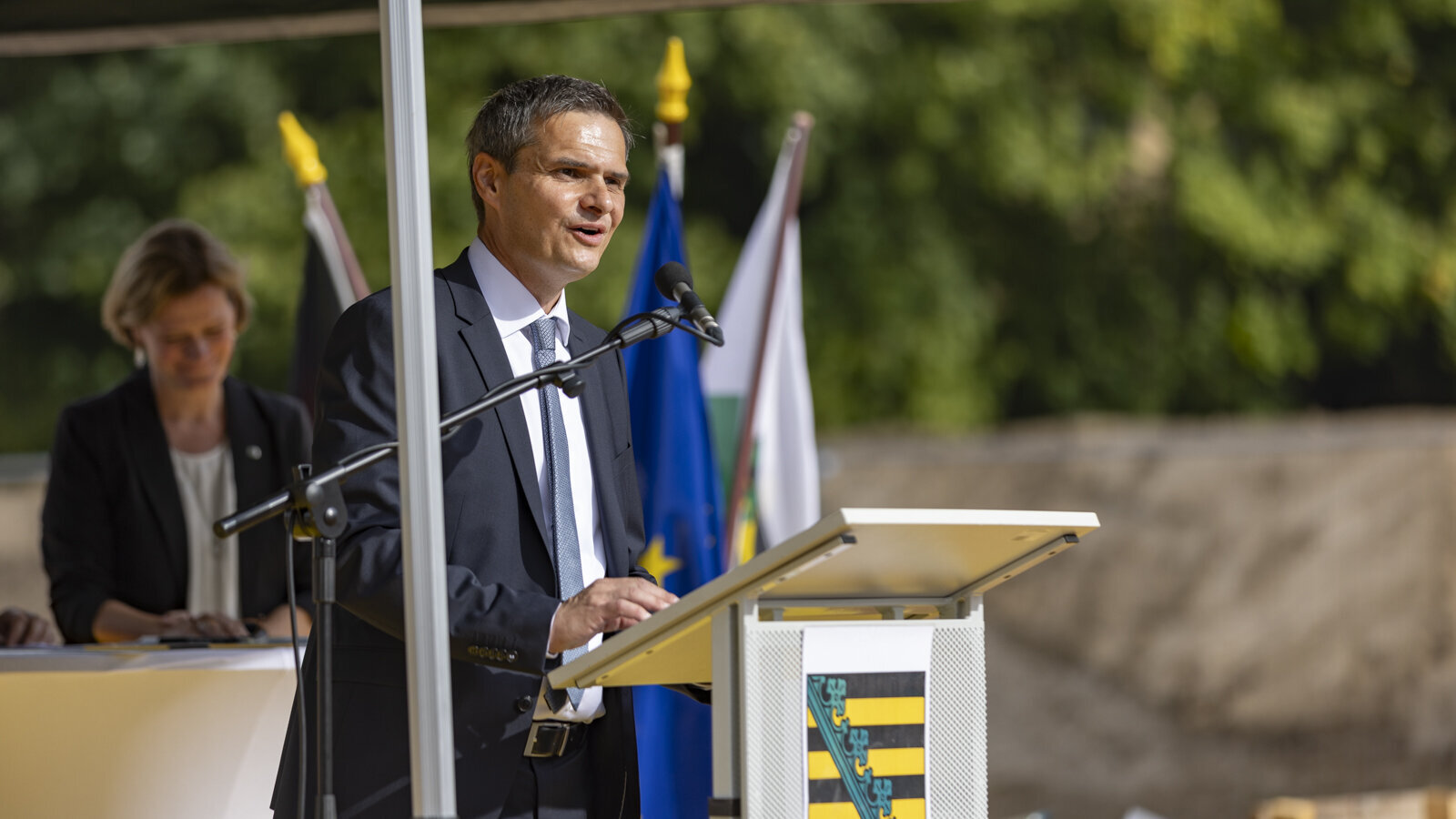
Falk Reinhardt, Chemnitz Branch Manager of the State Enterprise for Real Estate and Construction Management (SIB), expressed his wish for a smooth construction process with a view of the excavated building pit at the beginning of the laying of the foundation stone. Photo: Jacob Müller -
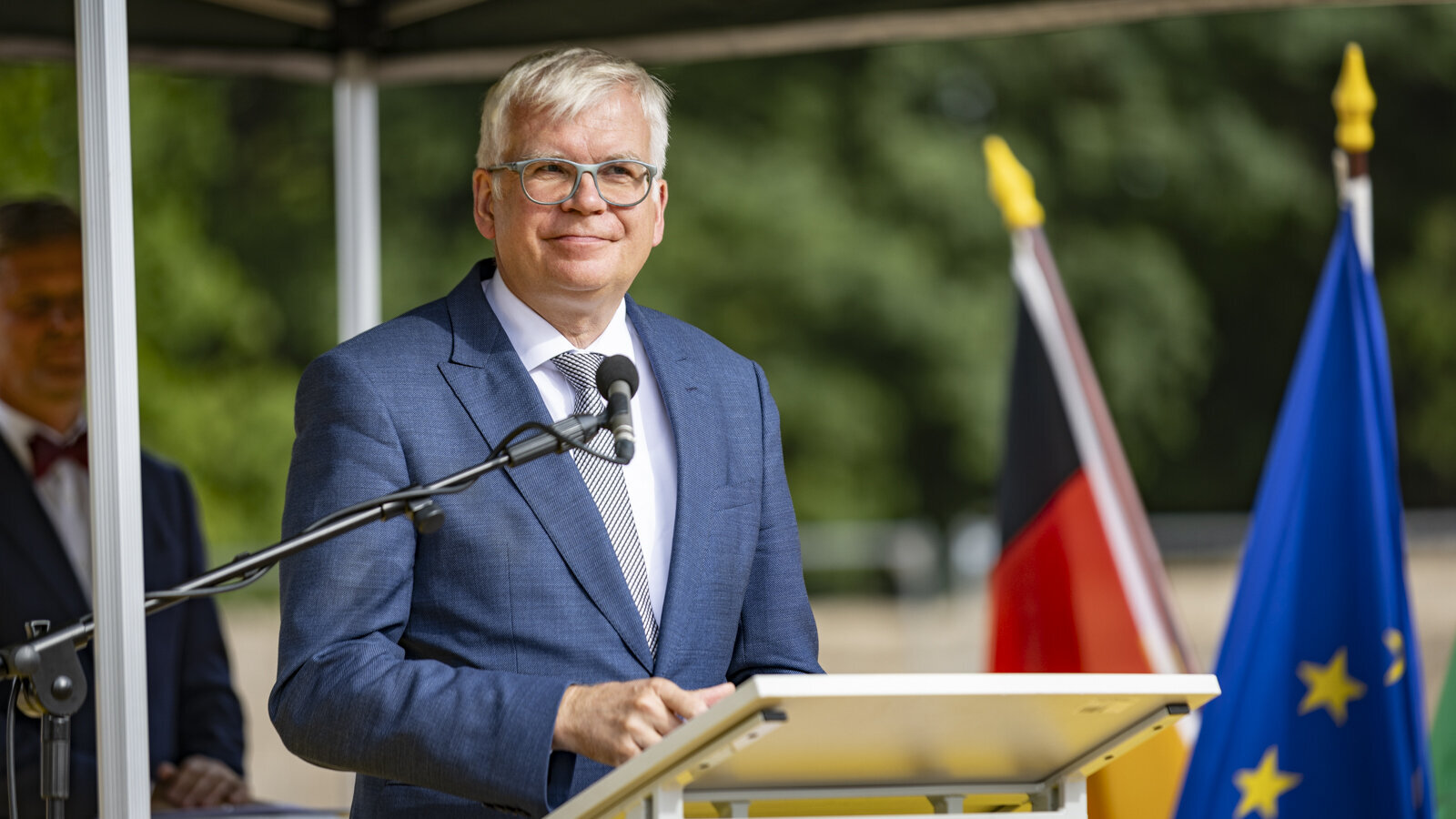
Saxony's Minister of Finance Hartmut Vorjohann stated: "The Free State of Saxony is proud to have the opportunity to establish an Electron Microscopy Center at Chemnitz University of Technology. We are investing around eleven million euros together with the EU. This is a significant financial effort, which once again underscores the importance of science, research, and education. We are looking forward to the significant discoveries and breakthroughs that will result from this investment in the coming years." Photo: Jacob Müller -
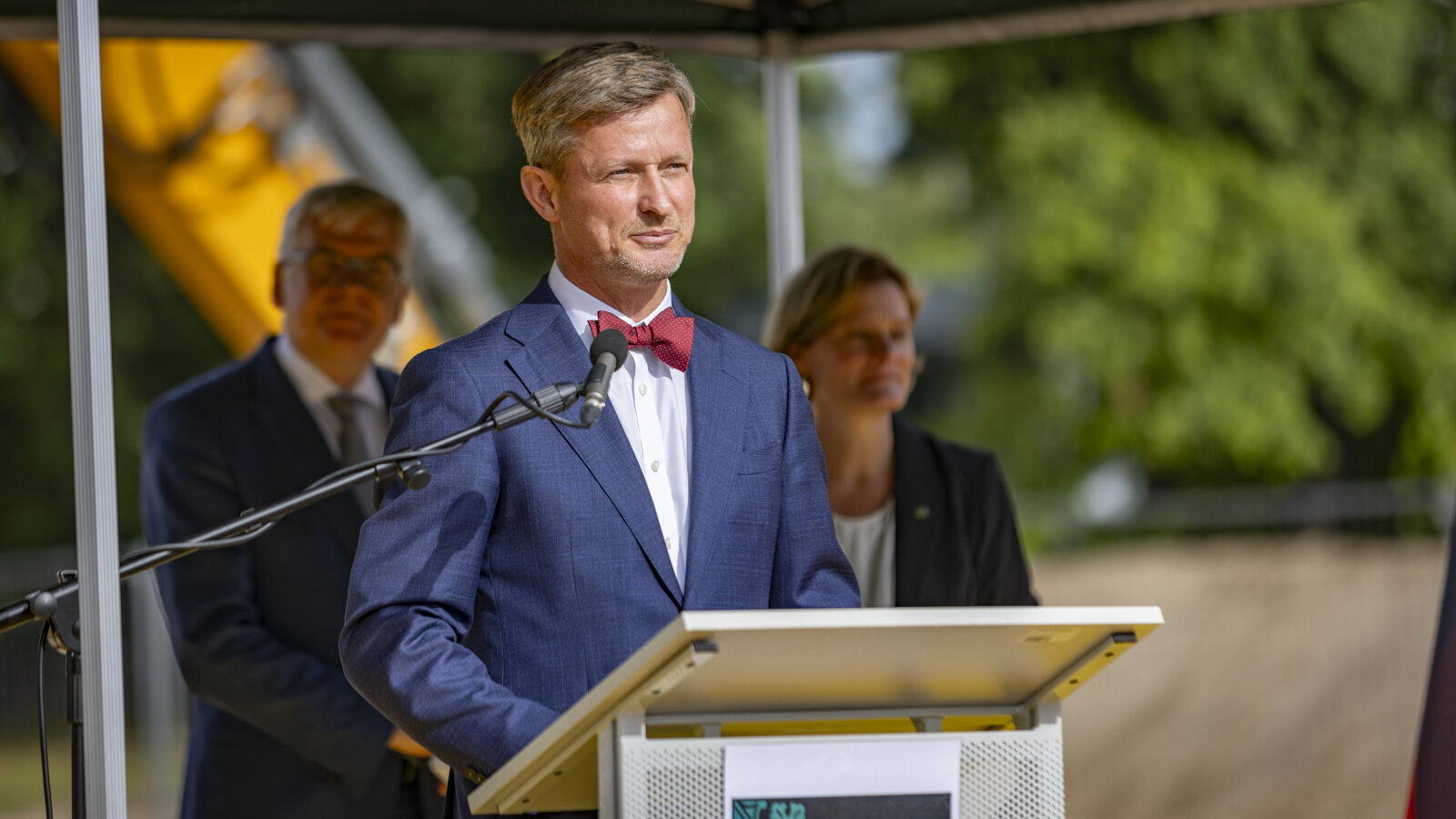
Dr. Andreas Handschuh, State Secretary at the Saxon Ministry of Science, Culture and Tourism, emphasized: "With state-of-the-art transmission electron microscopy, Chemnitz University of Technology is creating the conditions to strengthen its core competence - the research and development of materials as a basis for future technologies. We also hope that this project will provide significant input for Chemnitz University of Technology's application in the next excellence initiative, where the engineering disciplines should showcase their strengths." Photo: Jacob Müller -
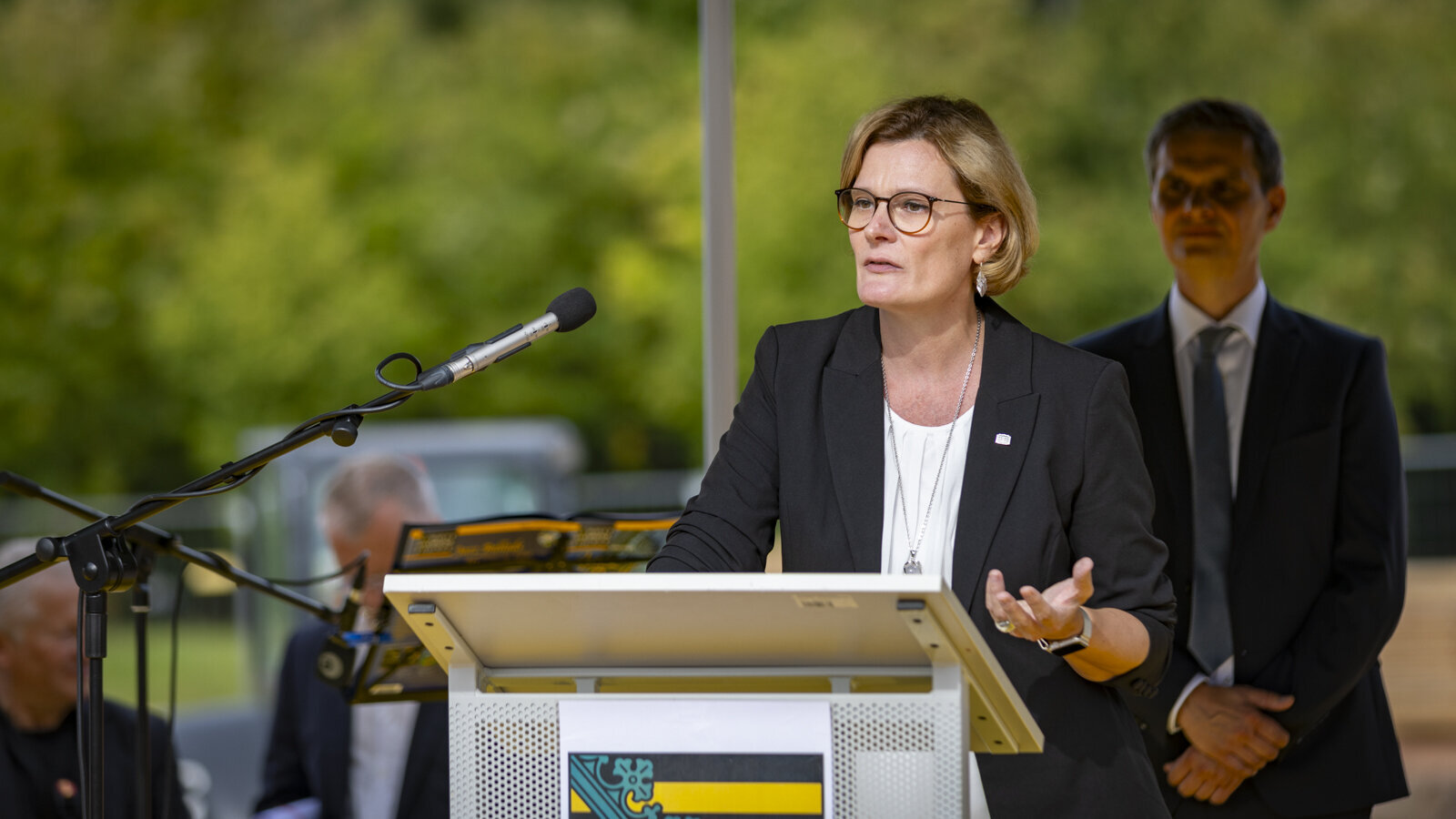
Vice President Prof. Dr. Anja Strobel emphasized that the new Electron Microscopy Center strengthens the MINT area at Chemnitz University of Technology and creates attractive conditions for recruiting and training young academics by providing students and junior scientists with access to the latest technologies and methods in materials science. Photo: Jacob Müller -
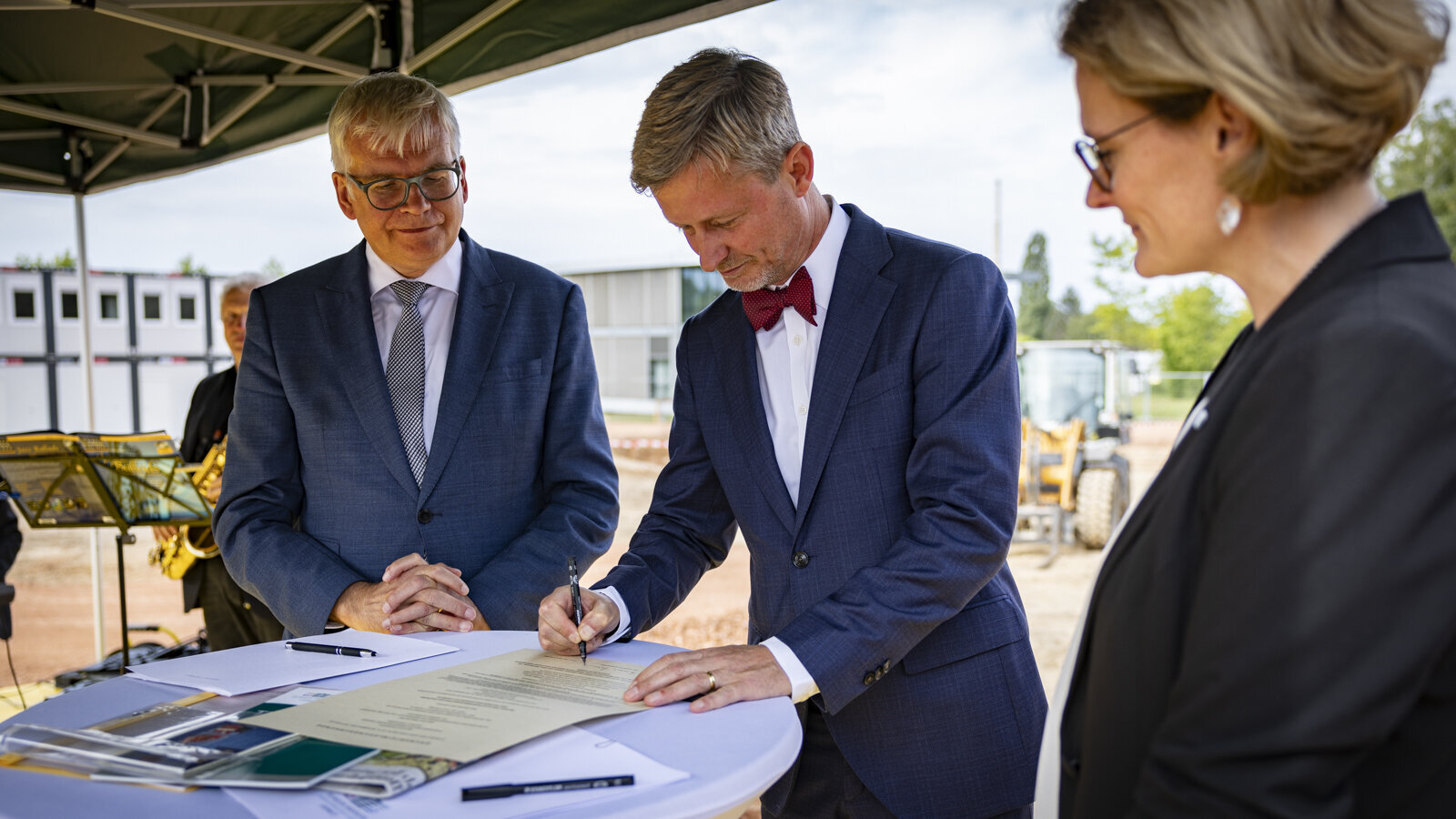
Saxony's Minister of Finance Hartmut Vorjohann (from left), the State Secretary in the Saxon Ministry of Science, Culture and Tourism, Andreas Handschuh, and the Vice President for Research and University Development at Chemnitz University of Technology, Prof. Dr. Anja Strobel, signed the foundation stone laying certificate one after the other. Photo: Jacob Müller -
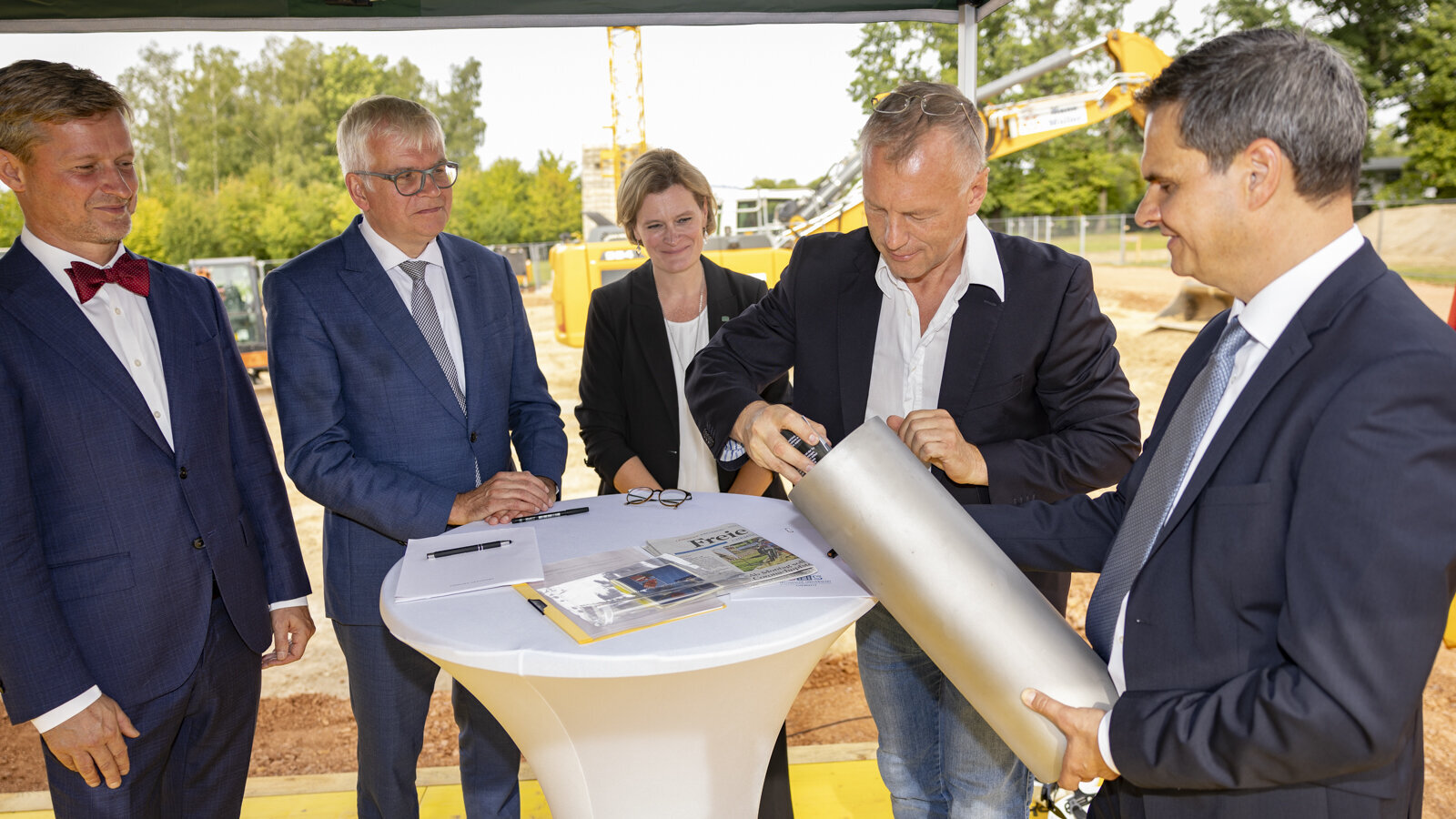
SIB project manager Mirko Richtsteiger (2nd from right) filled the cassette with contemporary documents, including today's edition of the Freie Presse, the latest issue of the TUCreport, a set of coins and the foundation stone certificate. Photo: Jacob Müller -
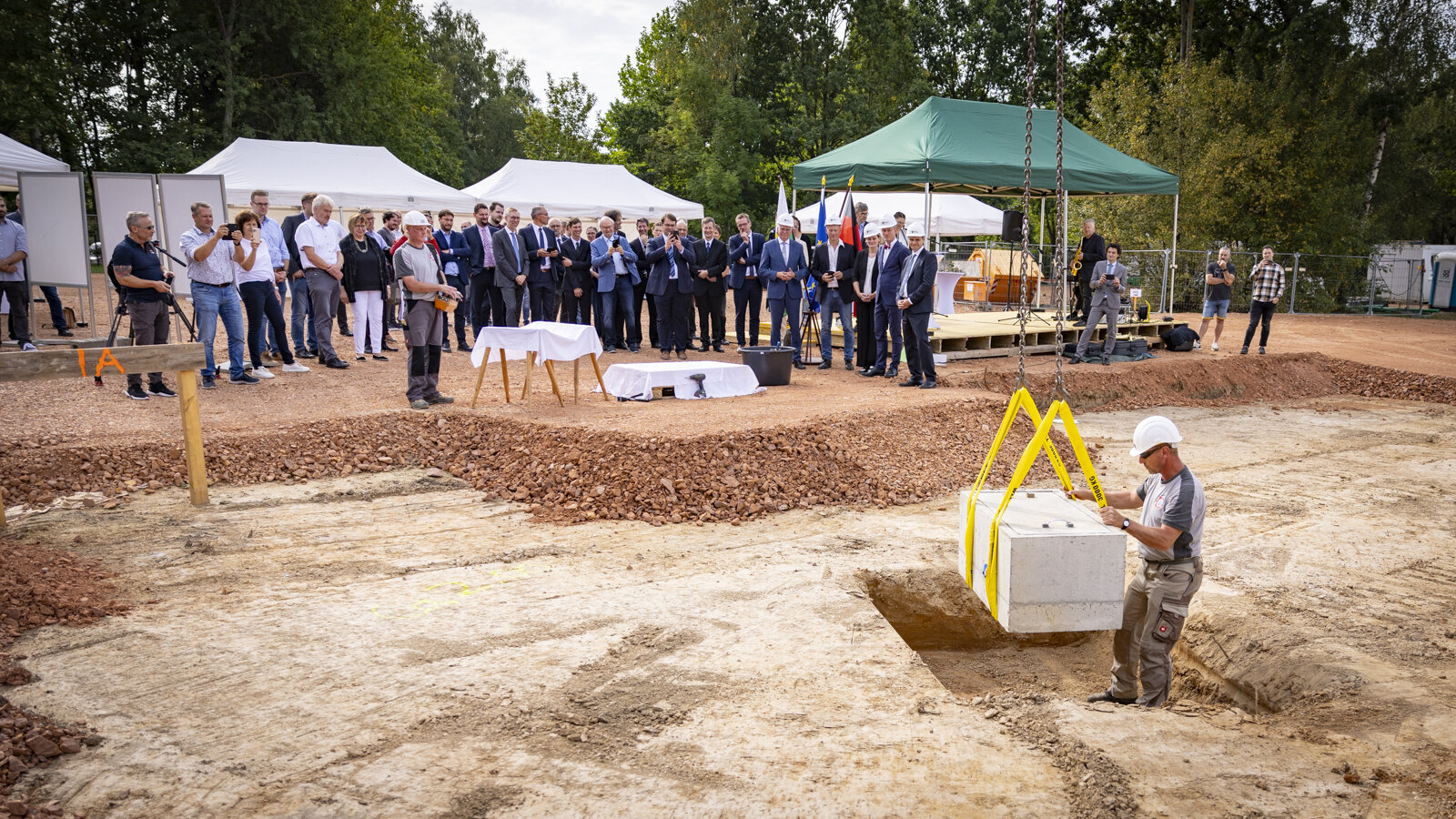
An employee of the construction company aligns the foundation stone as it is lowered into the excavation pit. Numerous guests watch the laying of the foundation stone from a safe distance. Photo: Jacob Müller -
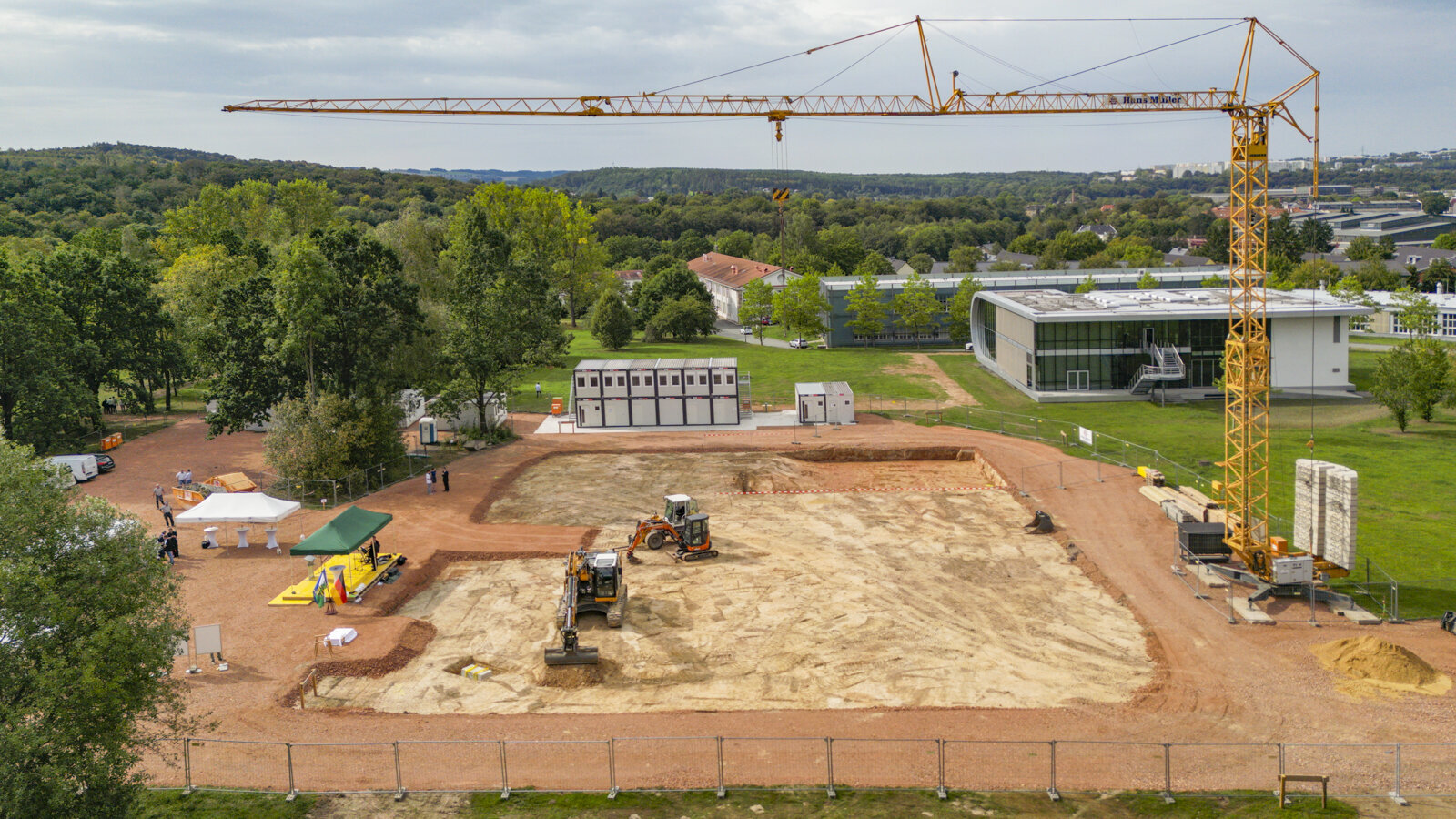
View of the construction site not far from the METEOR project building on the grounds of the Erfenschlager Straße 73 campus. Here, a 1.40-meter-thick reinforced concrete slab will be poured in two shifts over the next few weeks. Around 300 concrete mixers will have to be moved in. Photo: Jacob Müller -
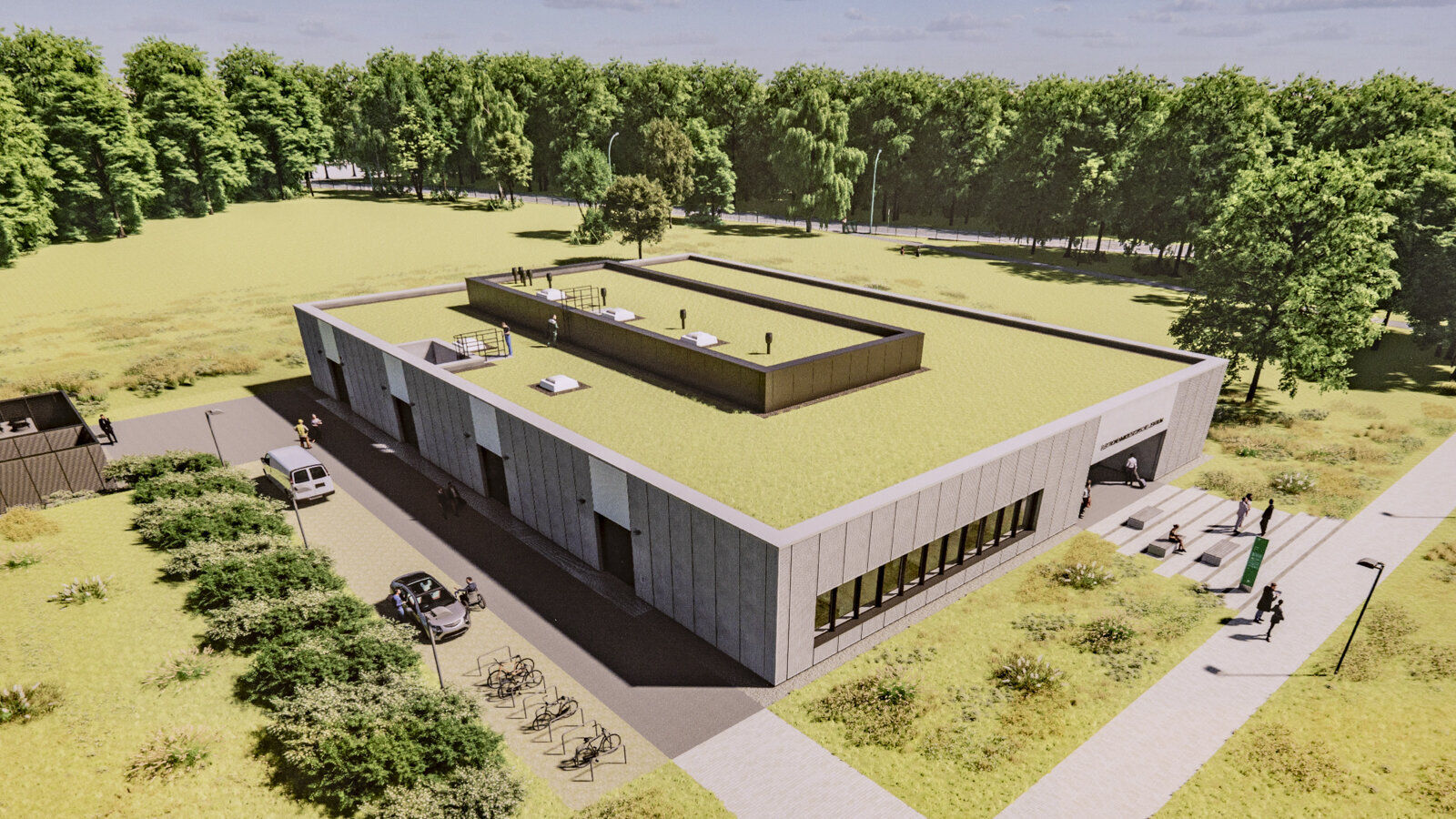
Visualization of the new Electron Microscopy Center of Chemnitz University of Technology at Erfenschlager Straße 73. The building will be constructed as a functional building with specially shielded and air-conditioned rooms with vibration-isolated or vibration-compensating foundations to create the best possible operating conditions for highly sensitive electron microscopes. After completion, two transmission electron microscopes and one ion fine beam microscope will be installed in the new building for precise and partially automated production of electron-transparent samples. Graphic: Heinle Wischer Partnerschaft freier Architekten mbB -
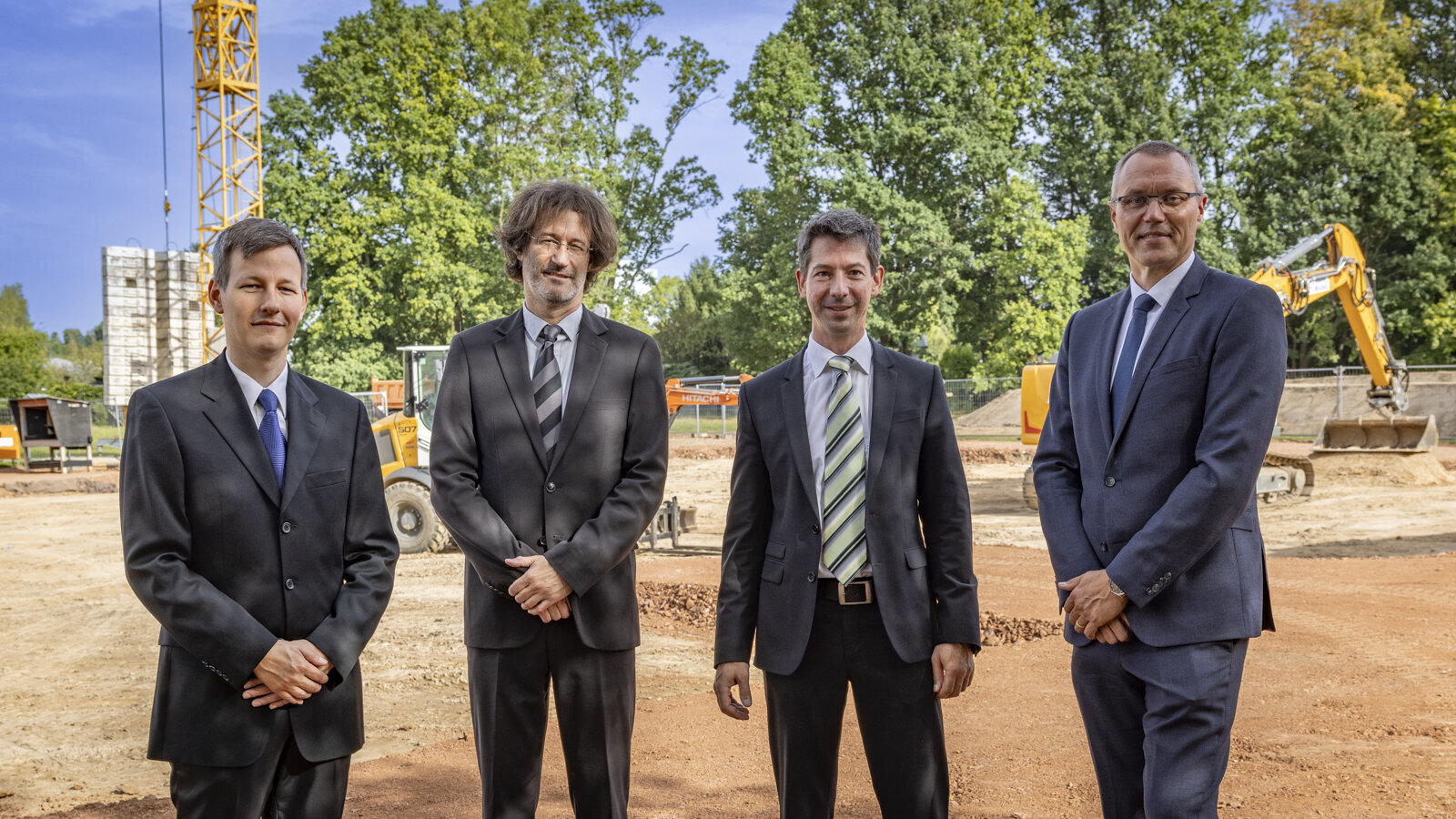
Parallel to the planning of the center, the funds for the large-scale equipment were obtained by professors Christoph Tegenkamp (from right to left), Martin Wagner and Bernhard Wunderle via the German Research Foundation. Prof. Dr. Andreas Undisz (left), head of the Professorship of Electron Microscopy and Microstructural Analysis at Chemnitz University of Technology, will lead the new center from mid-2025. Photo: Jacob Müller
On September 18, 2023, the foundation stone was laid for the new Electron Microscopy Center at Chemnitz University of Technology. The Saxon Minister of Finance Hartmut Vorjohann, Dr. Andreas Handschuh, State Secretary in the Saxon Ministry for Science, Culture, and Tourism, and the Vice President for Research and University Development at TUC, Prof. Dr. Anja Strobel, solemnly placed the foundation stone at the construction site on Erfenschlager Straße 73. There, under the guidance of the State Office for Real Estate and Construction Management (SIB), a new building is being constructed on 600 square meters to house two high-resolution transmission electron microscopes. These highly sensitive devices are of paramount importance for contemporary material examination by numerous professorships from the Faculties of Mechanical Engineering, Natural Sciences, and Electrical Engineering and Information Technology at TUC. The Electron Microscopy Center is planned to commence operations in 2025.
Saxony's Minister of Finance Hartmut Vorjohann stated, "The Free State of Saxony is proud to have the opportunity to establish an Electron Microscopy Center at Chemnitz University of Technology. We are investing around eleven million euros together with the EU. This is a significant financial effort, which once again underscores the importance of science, research, and education. We are looking forward to the significant discoveries and breakthroughs that will result from this investment in the coming years."
Dr. Andreas Handschuh, State Secretary in the Saxon Ministry for Science, Culture, and Tourism, emphasized, "With state-of-the-art transmission electron microscopy, Chemnitz University of Technology is creating the conditions to strengthen its core competence - the research and development of materials as a basis for future technologies. We also hope that this project will provide significant input for Chemnitz University of Technology's application in the next excellence initiative, where the engineering disciplines should showcase their strengths."
Vice President Prof. Dr. Anja Strobel said, "With the Electron Microscopy Center at Chemnitz University of Technology, a cross-faculty platform is being created in the field of materials research, where expertise from various research areas is combined. Scientists from around 30 working groups at our university will be active here and contribute to enhancing the core competence of Chemnitz University of Technology in the fields of materials and smart systems, as well as increasing the international visibility of Chemnitz as a research location in this promising area." The center also strengthens the MINT area of Chemnitz University of Technology and creates attractive conditions for recruiting and training young academics, by allowing students and junior scientists access to the latest technologies and methods in materials science.
Parallel to the construction planning of the Electron Microscopy Center, funds for large equipment have already been successfully acquired from the German Research Foundation (DFG) on behalf of the three participating faculties by the professors Bernhard Wunderle, Martin Wagner, and Christoph Tegenkamp. In the future, an ion beam facility will enable the precise and semi-automated production of material samples just a few nanometers thick. This is a prerequisite for in-depth material analysis in the two new transmission electron microscopes, which will also be installed in the future functional building.
"These highly sensitive electron microscopes allow scientists to explore deep within materials, their structure, and properties at the molecular and atomic level, and then make the findings usable for future applications," said Prof. Dr. Andreas Undisz, head of the Professorship for Electron Microscopy and Microstructural Analysis at Chemnitz University of Technology, who will lead the new center from mid-2025 onwards. This allows for very detailed examinations of processes that lead to material damage, making more precise statements about the load-bearing capacity and life expectancy of components possible. "With the combination of functional building and state-of-the-art equipment, a research infrastructure is now being created at an international level, which we urgently need as a fundamental basis for continuing and sharpening cross-faculty materials research," said Undisz.
The construction is currently estimated to cost a total of around eleven million euros. Of this, approximately 6.3 million euros come from the European Fund for Regional Development (EFRD). The Free State of Saxony's contribution amounts to about 4.7 million euros. The construction project is co-financed by tax funds based on the budget approved by the Saxon State Parliament.
(Source: among other things, a press release from the Saxon Ministry of Finance / Translation: Brent Benofsky)
Matthias Fejes
19.09.2023




